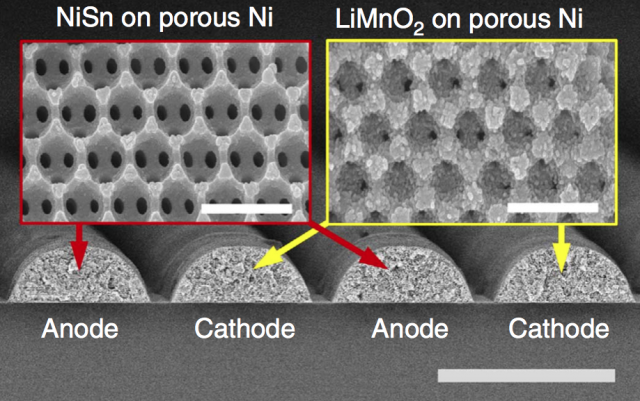This new microbattery is interesting, but not as good as the hype
Ars Technica » Scientific Method 2013-04-22

Battery technology is advancing fast—just compare the Watt-hours you can stuff into current devices to what was on the market a few decades ago (the Powerbook 140 had a 4200 mAh battery, while the current iPad has nearly three times that capacity). Research is continuing to advance at a rapid pace, which is why it sometimes seems like we cover a new miracle battery every month. We try to make it clear that most of these are still years away from commercialization, and some technologies will just never get there.
It's with that caution in mind that we turn to a battery development that was even picked up by the BBC earlier this week. In a new paper, researchers have reported that they are developing a microscopic battery that's suitable for integrating directly into electronics, just as capacitors now are. Compared to existing capacitors, its performance is impressive. That announcement doesn't mean, however, that these things can be scaled up to work as full-sized batteries that can power gadgets or cars. There are also a few hitches, like rapidly degrading performance, that need to be worked out.
That said, making the batteries is a pretty impressive process. In general, the batteries we buy are made from bulk processes, where materials self-organize into the different parts necessary to get the battery to work. This self-organization can be directed to a greater or lesser degree, but it's still dependent upon the material properties of the battery components.
Read 8 remaining paragraphs | Comments